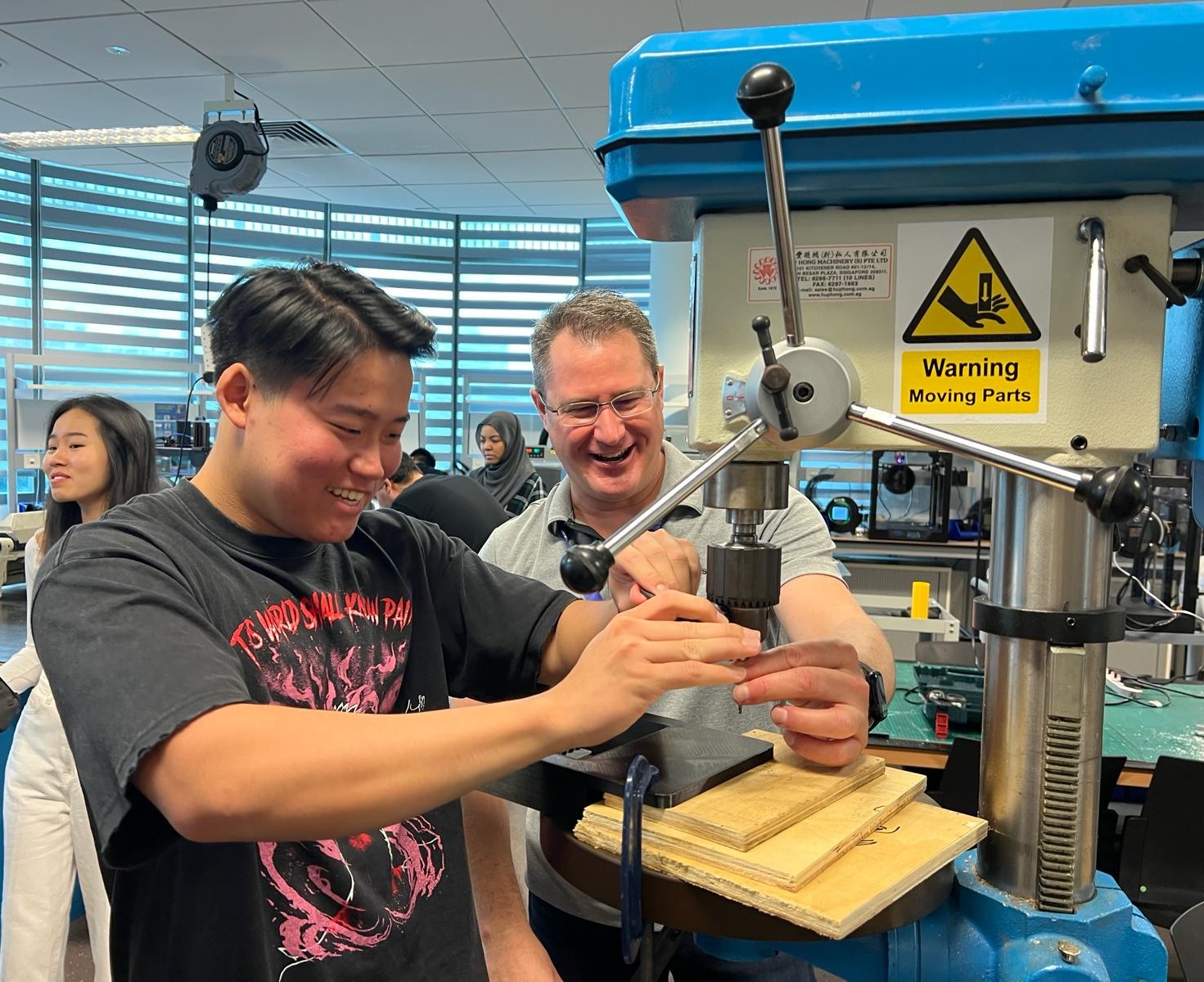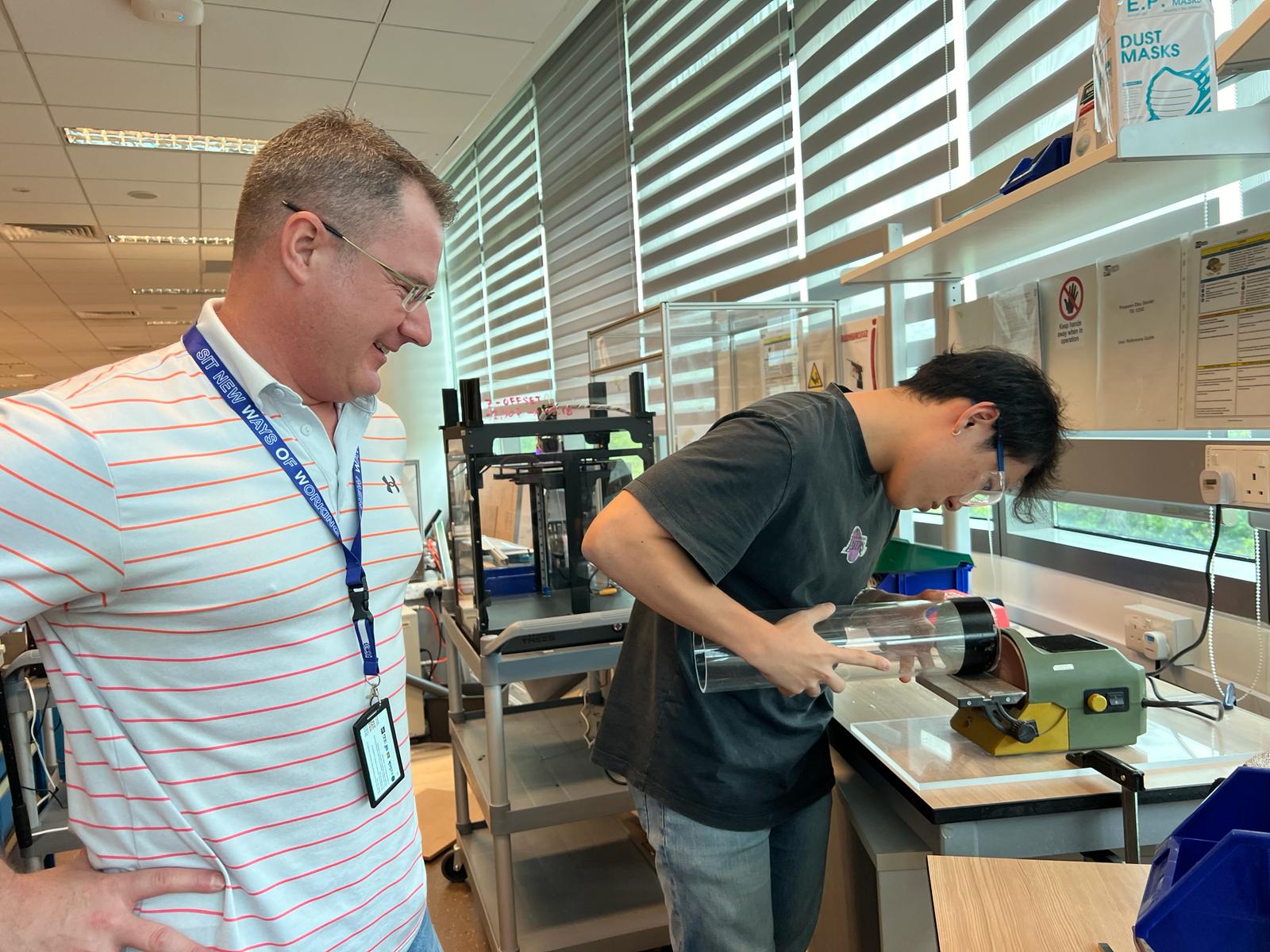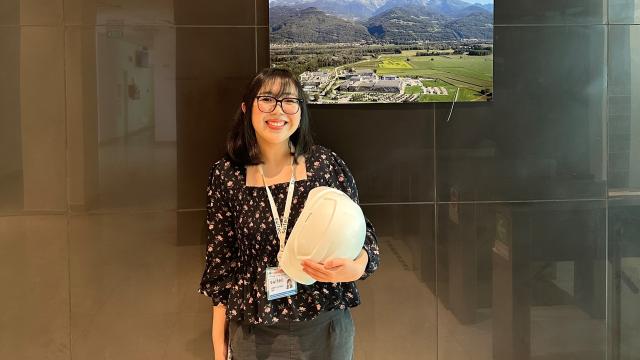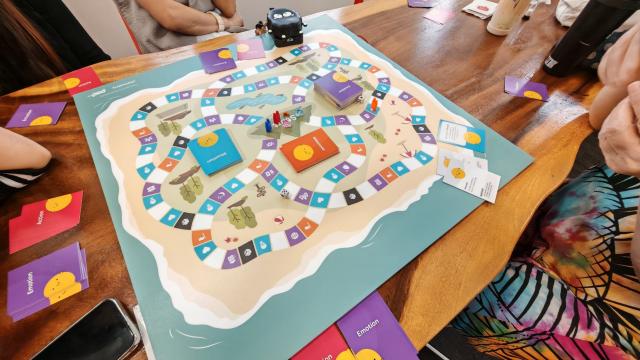Professional Officers like Christopher John Arnold are trump cards that equip SITizens with real-world industry skills.

Christopher guiding a student taking the Additive Engineering module, who is learning about a drill press setup and operating principles. (Photo: Christopher John Arnold)
School was out for a long-awaited spring, and Mr Christopher John Arnold could not wait to get his hands on a computer and his new copy of Solidworks 2000.
All the 20-year-old mechanical engineering major wanted was to tinker with the then-new computer aided design (CAD) software that could model three-dimensional parts, assemblies and full mechanical systems. “I was very interested in engineering when I was in school. Discovering new tools for engineering was and still is a passion of mine today.”
That was in 2000, long before the software became used by engineers worldwide. More than two decades later, Christopher would end up teaching the same tool to engineering students in sunny Singapore.
Today, the jovial 44-year-old is a Senior Professional Officer (PO) at the Singapore Institute of Technology (SIT), part of a unique group of academic staff in the university. POs are not professors but industry professionals with years of experience in their respective fields. In line with SIT’s applied learning pedagogy, they play a key role in helping students bridge the gap between classroom theory and real-world application.
Seeing the Big Picture

Christopher with a student taking the Mechanical Design module, working on a prototype part. (Photo: Christopher John Arnold)
Christopher joined technology company Hewlett Packard (HP) in 2007, where he worked as a Research and Development Engineer, Expert-Level Engineer, Team Lead and Project Manager. He travelled extensively on the job, working with global manufacturing companies such as Foxconn, Flex, and Jabil in Singapore.
His time at HP opened his eyes to the importance of solid engineering design and analysis and the complexities of high-volume manufacturing. It taught him that while good mechanical design is important, it is only one of many steps involved in delivering successful products.
“You can design anything with CAD software,” he said. “But if the design’s engineering is fundamentally flawed and challenging to produce and assemble, you end up hurting yourself, your employer and ultimately the customer.”
Now, as a PO, this is a crucial lesson he wants to impart to students: to adopt a holistic view of mechanical design and product development. “We need to look at the big picture. By learning sound engineering fundamentals and good manufacturing practices upfront, you become a stronger engineer,” he explained.
Cultivating Engineers of the Future
It was by chance that the engineer stumbled on a job opening for a PO role at SIT in 2023 after moving to Singapore from the United States in 2020 to be with his wife. The PO role merges industry skills and teaching, both endeavours that he enjoys. As a master’s and PhD student, he’d worked as a teaching assistant for a year and a half and enjoyed working with students and teaching labs and sections of Dynamic Systems and Engineering Measurements.
More importantly, SIT’s applied learning approach resonated with him. “I’m a hands-on engineer who likes to execute, work on projects and solve challenging problems,” he said. At SIT, he is a programme coordinator for the Competency-based Stackable Micro-credential (CSM) pathway in Infrastructure and Systems Engineering, and teaches the lab portion of the Additive Manufacturing, Composite Materials and Finite Element Analysis, Electromechanical Design, Engineering Graphics, and Mechanical Design modules. Christopher spends most of his days at SIT in the lab. He injects lessons with anecdotes from his time as an engineer to pique students’ interest.His Additive Manufacturing class – another term for 3D printing – usually begins with a story about his time at HP and previous companies where he had developed early generations of 3D printers. This helps students connect classroom learning with real-life situations, making classes more memorable.
“I strive to teach with real-world engineering components and examples. I have applied most of what I teach in the real world, and by sharing my stories, I hope it highlights the importance of good engineering practices, thinking ahead and learning from early failures,” he shared.
He has also established an open-door policy with students. They know when he will be in the lab and can freely contact him if they have issues with projects.
“My job is to help the students,” he said. “So when I’m not teaching, I try to be in the lab.”
The educator is also always looking for ways to improve in-class learning. Currently, students work with Lego parts to learn machine and gear fundamentals. However, Christopher wondered if students would learn better with industry-standard components such as gears, bearings, belts, pullies and fasteners. To bridge the gap, he is working with a team on a life-sized teaching kit that would supplement one’s basic understanding of machine and gear design.
The kit, which will be introduced to mechanical engineering students in July this year, will eventually replace the traditional method of using Lego blocks as engineering components.
“I hope to motivate students to see the significance of SIT’s hands-on philosophy and help them understand why it is important,” he said. “And if I can give context, that’s a good way to motivate students to want to learn,” he said.
![[FA] SIT One SITizen Alumni Initiative_Web banner_1244px x 688px.jpg](/sites/default/files/2024-12/%5BFA%5D%20%20SIT%20One%20SITizen%20Alumni%20Initiative_Web%20banner_1244px%20x%20688px.jpg)


